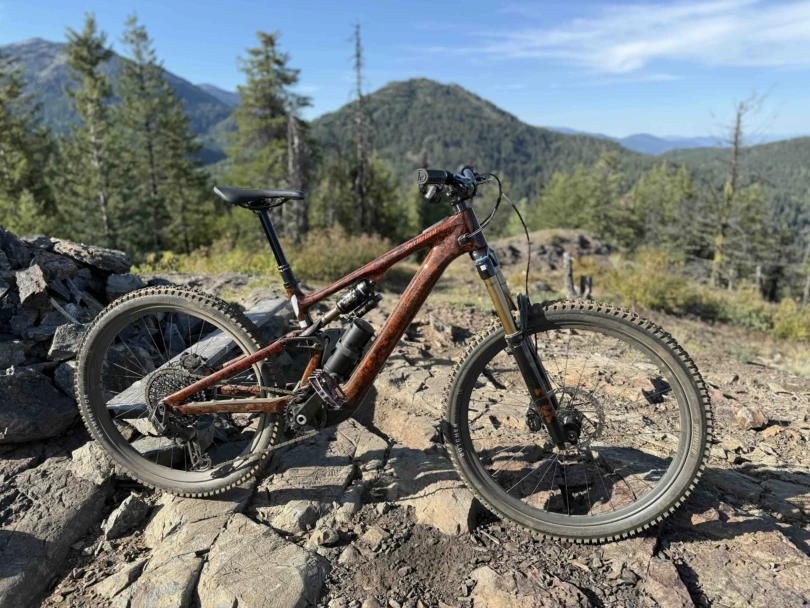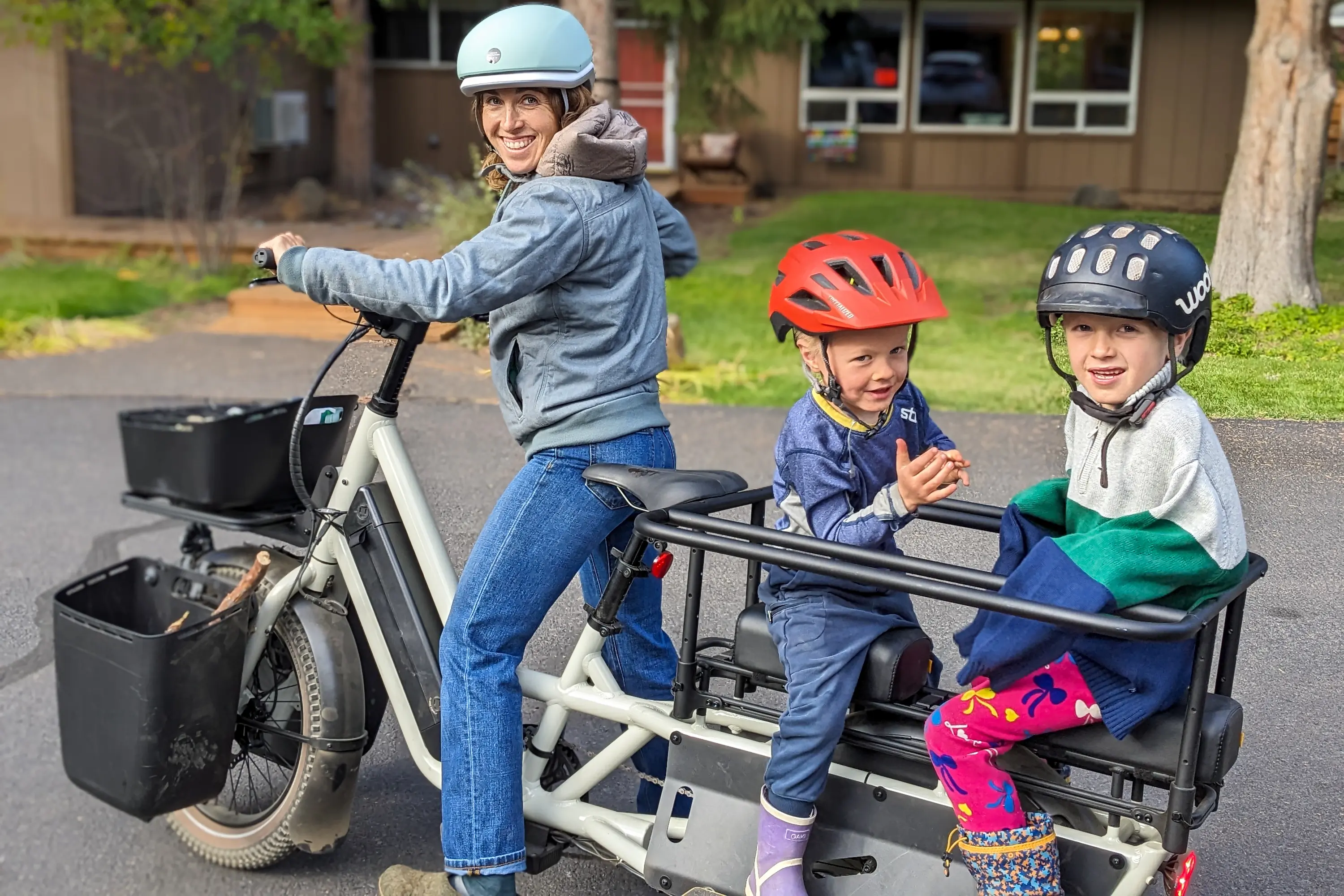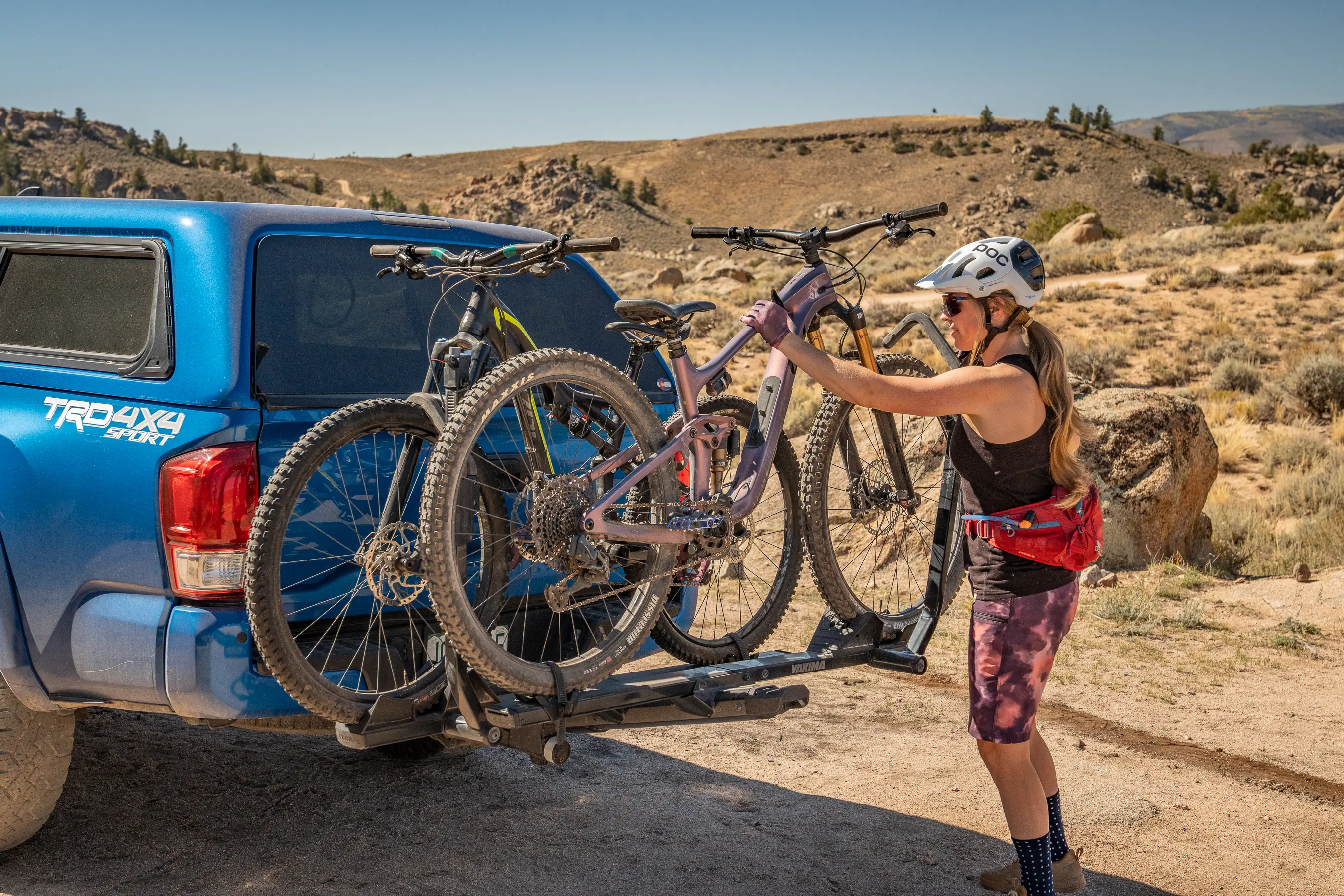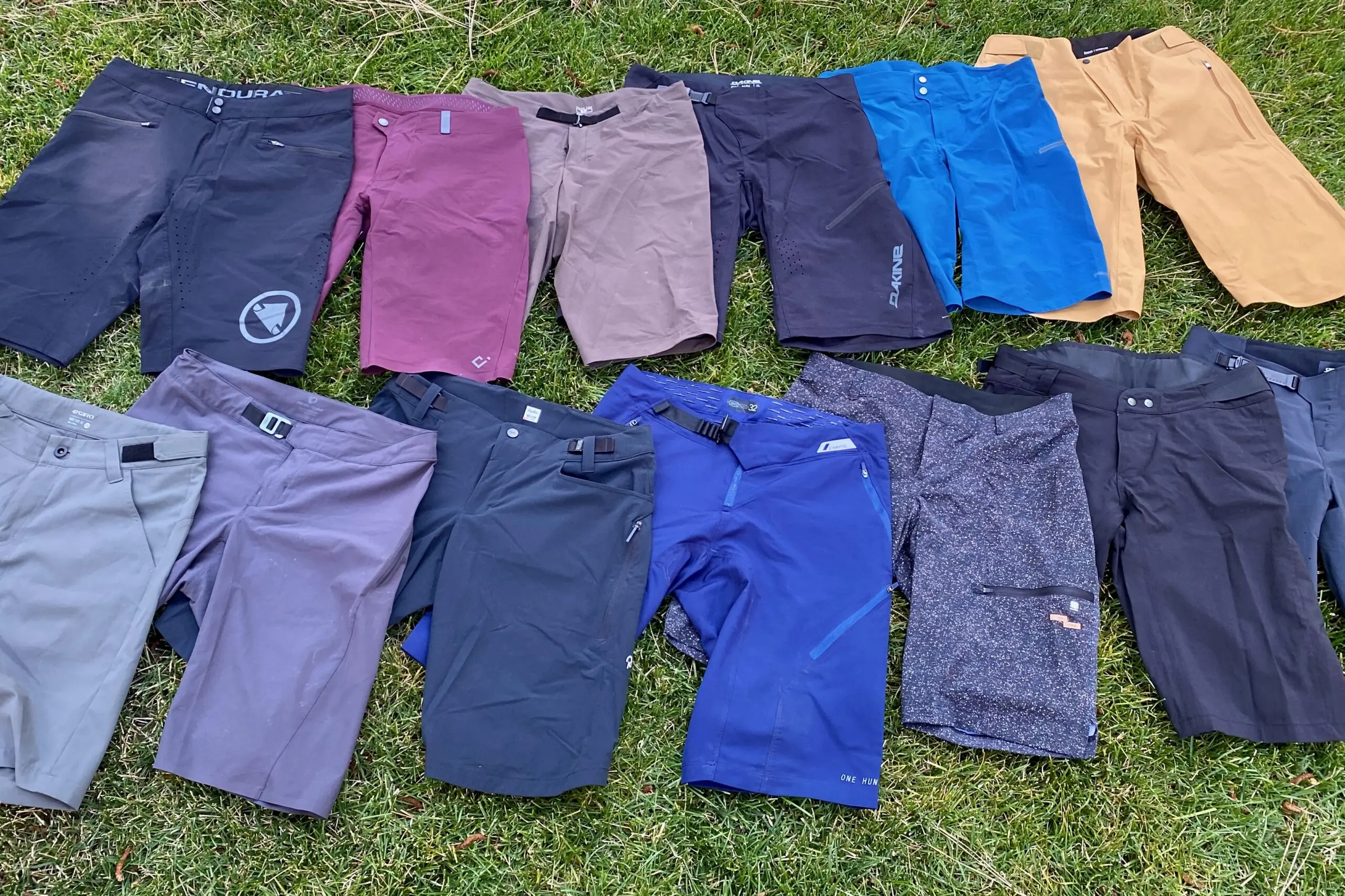With more than 5,000 miles of cross-country biking as the testing ground, I set out to determine which Brooks saddle is friendlier on the fanny.

In 1888, Brooks England began making leather saddles. Nearly 130 years later, the classic B17 Standard is among riders’ favorites for long distances. But, four years ago, the brand launched the Cambium, a softer rubber seat.
So I tested both during a 4,700-mile route across the United States, pitting the brand’s oldest model against its newest to see how they’d hold up.
Brooks B17 Standard Leather Bike Saddle
Similar to the horse saddles Brooks once made, B17 saddles use stretched leather “hammock construction” that requires a break-in period. With proper maintenance and care, the leather will mold to your body and last for years.
For this test, I rode on the B17 S Standard for 2,500 miles over almost three months.
Note: For both B17 and C17 models, the “S” stands for “short” and generally fits better to female anatomy.
Brooks B17 S Standard
- Frame: Steel
- Weight: 460 grams
- Dimensions: 242mm x 176mm x 58mm
- Cost: $145 msrp ($140 at Backcountry)
Brooks C17 S Cotton-Rubber Bike Saddle
The C17 saddle still models after the B17 but is instead made of vulcanized natural rubber and organic cotton. Marketed as “ready to ride,” the saddle is waterproof, durable, and maintenance free.
The sleek design looks sportier than other Brooks saddles. I rode on a C17 S for roughly 2,200 miles over two months.
Brooks C17 S
- Frame: Steel
- Weight: 415 grams
- Dimensions: 283mm x 162mm x 52mm
- Cost: $160 msrp ($129 at REI)
First Test: 2,200 Miles on Brooks C17 S
For this tour, I came right off the couch and was thankful to get a bike seat that needed no break-in period. The natural-tan cotton top and steel components have an eco-minimal look, but it also comes in all black.
The saddle absorbs bumps well without being too bouncy, and the low-profile design stayed away from my thighs, eliminating chafing issues. Cycling in bike shorts, I felt that the cotton material helped keep my butt in place.
I had no issues with worn clothing, but my bike partner on the same saddle (men’s version) wore through two pairs of khakis. Maybe you have to give up cycling in denim to use vegan bike saddles that are ready to ride.

As for durability, 2,200 miles, countless scrapes, rain storms, and one small crash later, I can say that the C17 holds up.
That said, there are some trade-offs for such an easy bike seat. While I didn’t experience any numbness while riding, long days on the bike would leave my sit bones feeling pretty tender.
C17 summary: When not delicately getting off my bike at the end of the day, I enjoyed my time on the C17. The initial comfort paired with incredible durability makes this a worthy addition to any cyclists kit. If you only ride for a couple of hours at a time and want a saddle you can really beat up, take a look at the Cambium model.
Final 2,500 Miles: Brooks B17 Test

Just shy of halfway through my bike tour, I traded out the C17 for the classic leather B17 Standard. Perhaps I was just warmed up from the Cambium, but the B17 felt comfortable right from the start.
It took a lot more tinkering to get the right fit, but once I did, the break-in period flew by. Soon I had a beautiful honey-leather saddle cradling my sit bones.
Of course, no saddle is perfect. Rain can cause damage to the leather and speeds up wear, and wet leather can bleed into clothing. If you protect your saddle from the elements and care for it properly, it will last through many tours.
B17 summary: Of course, no saddle can be perfect. Because of the extra material on the leather seats, I actually experienced more thigh chafing on this seat than the C7—though it was nothing a little glide couldn’t fix. This mostly happened when the leather was wet. Once adjusted and broken in, the B17 saddle provided comfort I have never before experienced on a bicycle. After hours of steady riding, my butt wasn’t sore, and I could hop off the bike like a spring chicken. The saddle looks good and feels even better.
Results: ‘Standard’ is Still The Standard
While the saddles are essentially the same model with different materials, they give very distinct rides. The rugged bounciness of the C17 is more suited to day trip use: perhaps a commuter, track, or mountain bike. With a slightly more expensive price tag, you are trading the extra cash for a comfortable-enough, no maintenance saddle.
Meanwhile, the B17 is less expensive. But if you’re not willing to put in some care and physical effort for the break-in period, it’s not the saddle for you. Cycling around 60 miles a day for weeks on end, the break-in period flew by for me, and I was soon riding on a butter-smooth seat.
After trying both, I (and my bum) have to claim the B17 as the superior saddle in regards to comfort over long distances. With 2,500 miles on it, and hopefully many more, it could be the last saddle I’ll buy for a long time.







